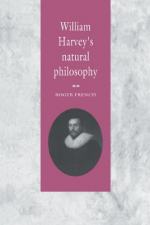|
This section contains 1,282 words (approx. 5 pages at 300 words per page) |

|
William Harvey, the English doctor and anatomist, was the demonstrator of the principle of the circulation of the blood. He was born at Folkstone, Kent, and educated at King's School, Canterbury, and Gonville and Caius College, Cambridge. After taking his B.A. in 1597, he left Cambridge for Padua, where he worked with the anatomist Fabrizzi d'Acquapendente (often Latinized as Fabrizio of Aquapendente). Fabrizzi had observed the valves in the veins, although he had not understood their function; Harvey told Robert Boyle that he had developed his theory of the circulation of the blood by reflecting on the operation of these valves, perhaps while still at Padua. In 1602 Harvey graduated from Padua with a medical degree and incorporated as an M.D. of Cambridge. Taking up practice in London, he was married in 1604 to Elizabeth Browne, daughter of the physician to James I. He was...
|
This section contains 1,282 words (approx. 5 pages at 300 words per page) |

|


